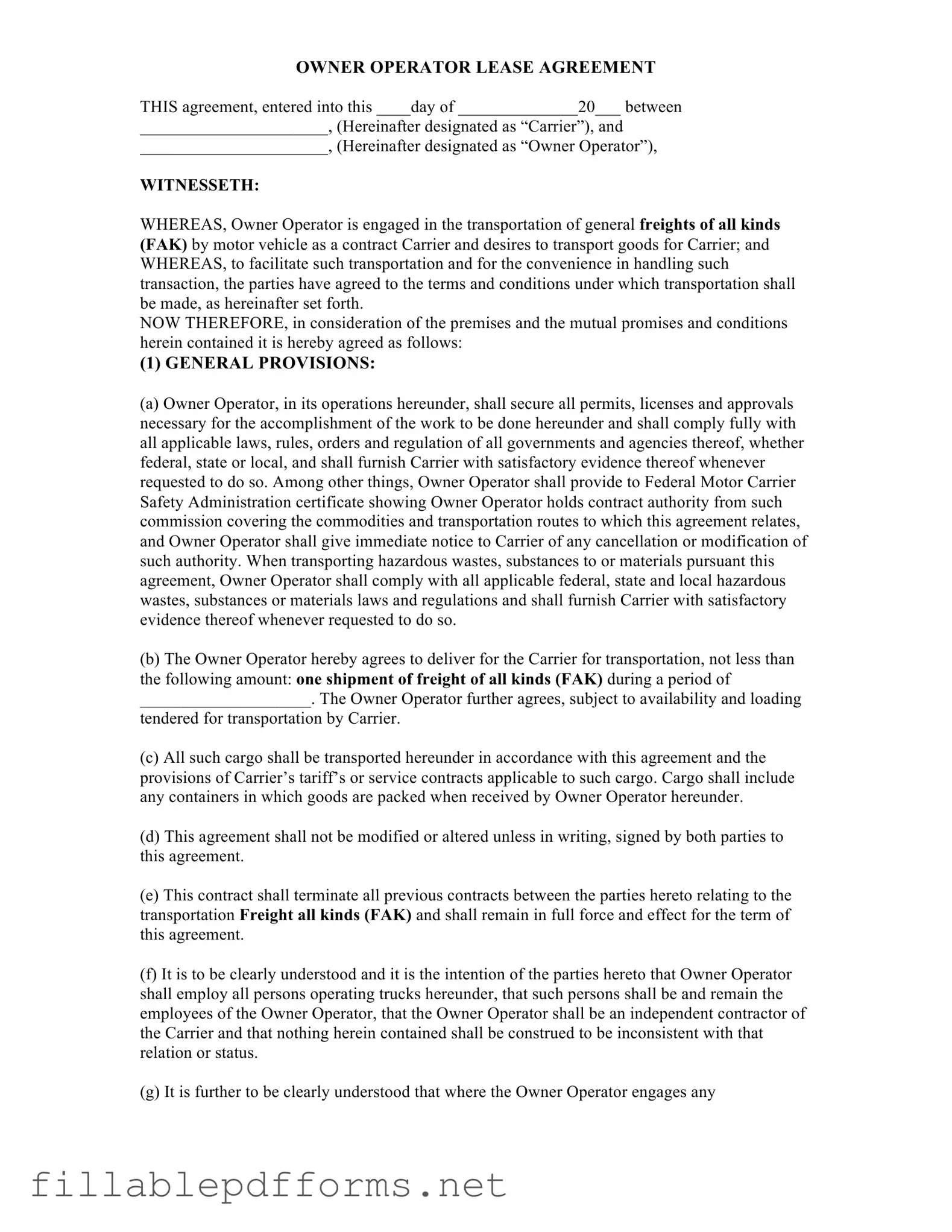The Owner Operator Lease Agreement form serves as a critical document in the transportation industry, establishing a formal relationship between a carrier and an owner operator. This agreement outlines the responsibilities, rights, and obligations of both parties involved in the transportation of goods. It begins with general provisions that highlight the necessity for the owner operator to secure all necessary permits and licenses while complying with applicable laws and regulations. The agreement specifies the cargo to be transported and emphasizes the importance of written receipts for goods received. Additionally, it addresses the care and custody of merchandise, placing liability on the owner operator for any loss or damage during transport. Insurance requirements are also a key aspect, mandating that the owner operator maintain adequate coverage to protect against various risks. The form includes provisions for compensation, confidentiality, and the process for providing notices, ensuring clear communication between the parties. Finally, it stipulates that the agreement is governed by state law, adding another layer of legal structure to the relationship. Overall, this document is essential for facilitating a smooth and legally compliant transportation process between carriers and owner operators.
